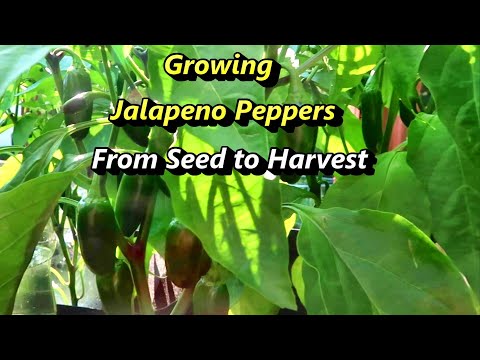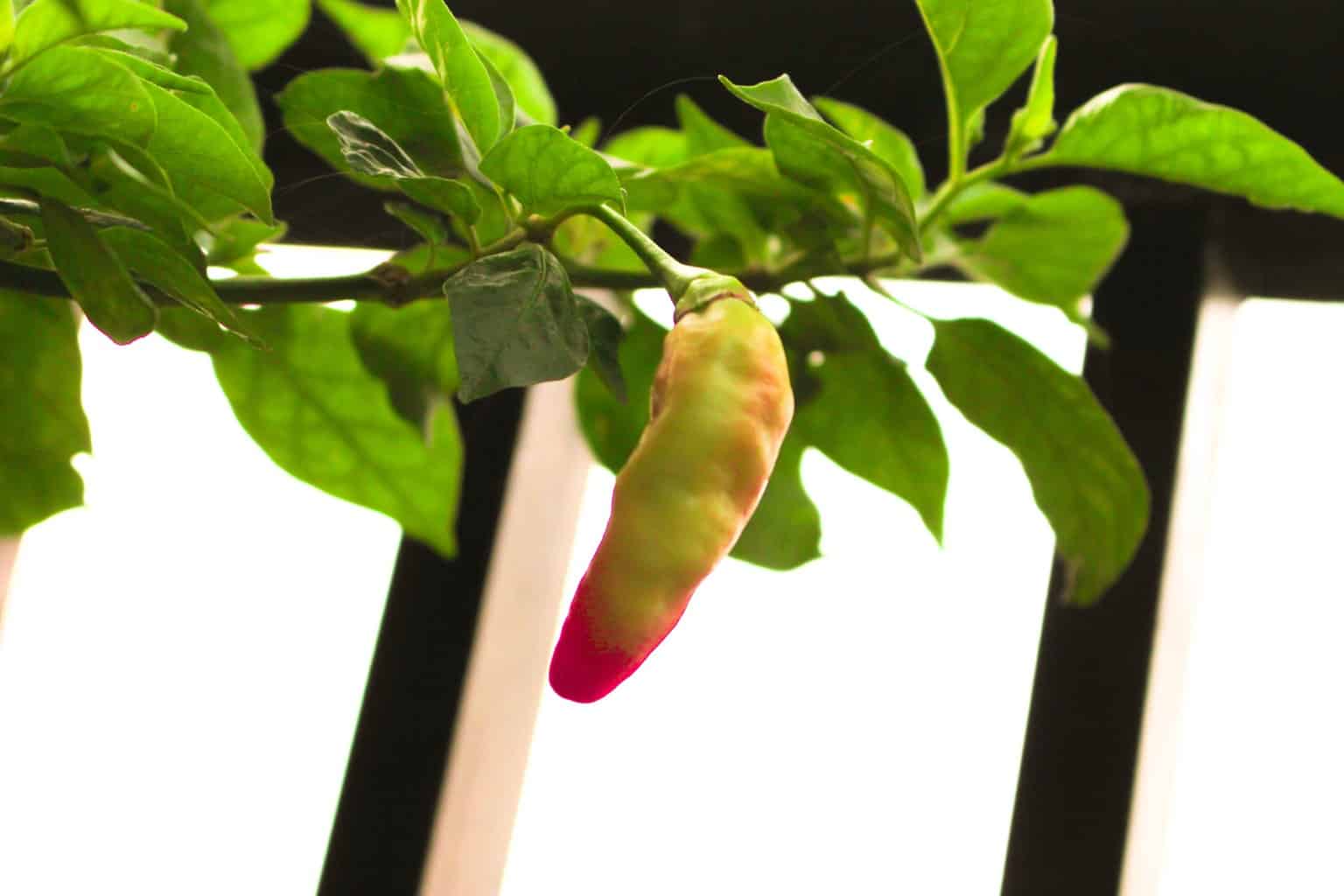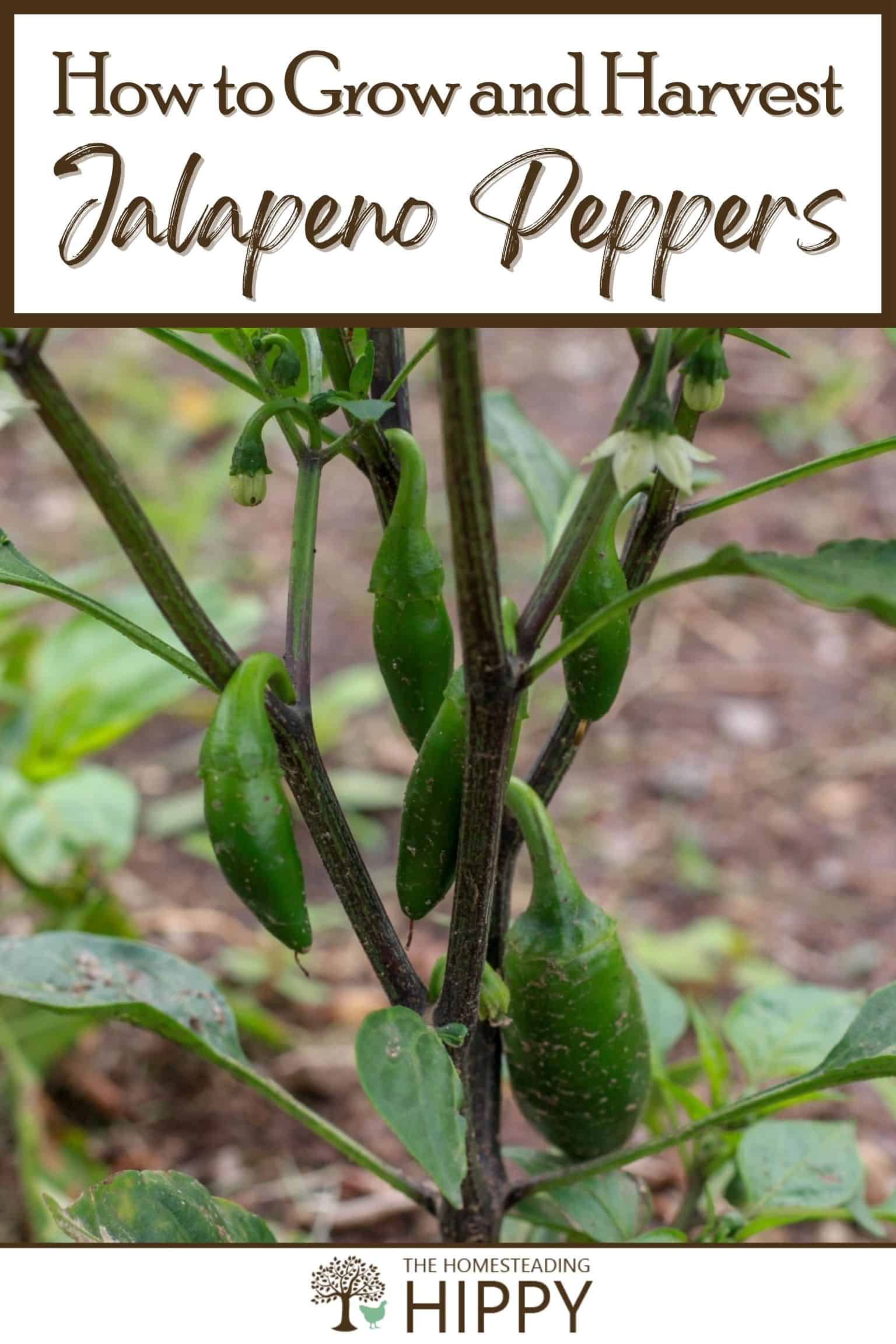So you like growing peppers, but you also want to add some spice to your life? Jalapeno peppers might be just the thing for you.

In this post, I will teach you how to plant, grow, and harvest jalapeno peppers. Let’s get started!
Are Jalapenos Easy to Grow?
Jalapenos are a type of chili pepper that originated in Mexico. They are typically used in Mexican cuisine and can be found in many different dishes, from salsa to guacamole.
While jalapenos are relatively easy to find in the grocery store, they can also be grown at home with relative ease.
All that is needed is a sunny spot in the garden and some well-drained soil. Jalapenos prefer hot weather, so it is best to plant them in the spring or summer.
They will take around two months to mature, and should be harvested before the first frost. With a little patience and care, it is easy to enjoy fresh jalapenos right from the garden.
How Long Does it Take to Grow Jalapenos?
For those who like their food with a little bit of a kick, jalapenos are a perfect choice. But how long does it take to grow these fiery peppers? The answer may surprise you.
Jalapenos generally take between 60 and 90 days to mature. However, this can vary depending on the climate and growing conditions.
For instance, peppers grown in warmer climates will typically mature faster than those grown in cooler areas.
Additionally, jalapenos grown in greenhouses or indoors often mature more quickly than those grown outdoors.

Planting Jalapeno Peppers
For anyone who enjoys a little spice in their life, planting jalapeno peppers is a great way to add some zip to your home garden. Here’s how to do it.
Planting Jalapeno Seeds
Jalapeno seeds can be started indoors about six to eight weeks before the last frost date in your area. Sow the seeds in rows or flats, spacing them about an inch apart.
Press the seeds gently into the soil, but do not cover them with more than a quarter-inch of soil. Keep the soil moist but not soggy, and provide bottom heat if possible.
Once the seedlings emerge, thin them so that they are spaced about eight inches apart.
Transplanting Your Jalapeno Pepper Plants
Starting your own plants from seed is a great way to get a head start on the growing season. However, at some point, your seedlings will need to be transplanted into the garden.
When transplanting jalapeno peppers, it is important to wait until the weather has warmed and all danger of frost has passed.
The soil should also be moist but not soggy. To transplant, dig a hole that is big enough to accommodate the roots of the plant.
Gently remove the plant from its pot and lower it into the hole, being careful not to damage the roots. Once the plant is in place, fill in the hole with soil and water well.
What Month Do You Plant Jalapeno Peppers?
In most parts of the country, the best time to plant jalapeno peppers is in late spring or early summer. This gives the plants enough time to produce a good crop before the weather starts to cool down in the fall.
However, in areas with milder climates, it is possible to plant jalapeno peppers in late winter or early spring. Whichever method you choose, be sure to start your plants indoors so that they are protected from any late frost.
Once the seedlings are big enough to handle, transplant them into larger pots or outdoor beds.
Ideal Soil Type for Jalapeno Peppers
One of the most important factors in ensuring a successful pepper crop is choosing the right soil. For jalapeno peppers, ideal soil should be high in organic matter and well-draining.
The pH level should be between 6.0 and 7.0. Peppers prefer warm weather and lots of sunlight, so the soil should be able to retain heat.
In terms of nutrients, jalapeno peppers need high levels of phosphorus, potassium, and calcium.
Amending the soil with compost or manure before planting can help to ensure that it meets all of these requirements.
Can You Grow Jalapeno Peppers in Pots?
Yes, you can grow Jalapeno peppers in pots. In fact, growing Jalapeno peppers in pots is a great way to get started with gardening.
Pots are easy to find and usually inexpensive, and they offer a great way to control the growth of your plants.
When growing Jalapeno peppers in pots, it’s important to choose a pot that is at least 12 inches wide and 18 inches deep.
This will give the roots enough room to grow and will help prevent the plant from becoming pot-bound.
You should also use a well-draining potting mix and water the plants regularly.

Caring for Your Jalapeno Plants
Here are a few tips to help you get the most out of your jalapeno plants.
Watering
While jalapeno plants are fairly resilient, they do require a consistent supply of water to produce the best possible yields.
Watering your plants on a regular basis helps to ensure that they have the moisture they need to stay healthy and produce plenty of peppers. Jalapeno plants should be watered deeply and evenly, about once a week.
Be sure to check the soil before watering, as it should be dry to the touch before you give your plants a drink.
In hot, dry weather, you may need to water your plants more frequently. If your plants start to wilt or the leaves begin to turn yellow, this is a sign that they are not getting enough water.
If you notice these symptoms, increase the frequency of your watering schedule until the plant recovers.
Weeding
When it comes to jalapeno plants, weeding is especially important. These plants are very sensitive to competition, and even a few weeds can inhibit their growth.
In addition, jalapenos are typically grown in relatively small spaces, so there is less room for weeds to spread.
For these reasons, it is important to remove weeds from around jalapeno plants as soon as they appear.
The best way to do this is to use a hoe or trowel to carefully loosen the soil around the plants and then pull the weeds by hand.
Be sure to dispose of the weeds in a way that will prevent them from spreading back into the garden.
Fertilizing
Jalapeno peppers are a delicious addition to many recipes, but they can be difficult to grow.
These peppers need a lot of nitrogen, so it’s important to use a fertilizer that is high in this nutrient.
Apply the fertilizer around the base of the plant, being careful not to get any on the leaves. Water the fertilizer in well, and then wait for the plant to produce peppers.
Pruning
While you may be eager to see your jalapeno plants produce peppers, it’s important to resist the urge to prune them too early. If you do, you may end up with fewer peppers than you would otherwise.
That’s because the process of pruning stimulates the plant to produce new growth, and that takes away from the energy it would otherwise use to produce fruits.
In general, you should wait until the plant has produced at least six peppers before undertaking any major pruning.
At that point, you can cut away any diseased or damaged leaves or stems. You can also remove any competing fruits so that the remaining peppers have a better chance of reaching maturity.
Common Pests and Diseases
Aphids, whiteflies, and spider mites are all common problems, and they can cause the leaves to turn yellow or brown.
More serious illnesses include Phytophthora root rot and blossom-end rot. Both of these diseases can cause the peppers to rot, rendering them inedible.
To prevent these problems, it is important to choose a well-drained growing location and to water the plants regularly.
Other Problems When Growing Jalapeno Peppers
In addition to pests and diseases, common problems when growing jalapeños include blossom end rot, sunburn, and poor pollination.
Blossom end rot is caused by a lack of calcium in the fruit, and can be prevented by adding lime to the soil or using a calcium-rich fertilizer.
Sunburn can occur when the peppers are exposed to too much direct sunlight and can be avoided by providing shading or covering the plants with netting.
Poor pollination can result in misshapen peppers and is often caused by cool weather or windy conditions.
By taking steps to prevent these common problems, gardeners can enjoy a bountiful harvest of jalapeño peppers.

How to Harvest Jalapeno Peppers
The jalapeno pepper is a delicious and versatile ingredient that can add a touch of spice to any dish.
But before you can enjoy the flavor of these peppers, they must be harvested. Jalapeno peppers are typically ready to harvest about 60-90 days after planting.
The best way to tell if they are ready is to check the color. Jalapeno peppers will start out green and then turn red, orange, or yellow when they are ripe.
Once they have reached the desired color, cut the peppers from the plant using a sharp knife or shears.
Be sure to handle the peppers with care, as they can be quite spicy. After harvesting, jalapeno peppers can be enjoyed fresh, pickled, or cooked.
Storing and Preserving Jalapeno Peppers
Jalapeno peppers are a popular ingredient in many Mexican dishes, adding a spicy flavor to both food and drink.
They can also be used fresh or pickled as a topping or condiment. When properly stored, jalapeno peppers can last for several weeks.
The best way to store jalapeno peppers is in the refrigerator. Wrap them tightly in plastic wrap or place them in a plastic bag before putting them in the fridge. This will help to keep them fresh for longer.
If you want to preserve jalapeno peppers for even longer, you can pickle them.
To pickle jalapeno peppers, wash and slice them thin. Place the slices in a jar and cover with vinegar.
Seal the jar tightly and store it in the fridge. The vinegar will help to keep the peppers fresh and crunchy for several months.
Whether you’re using them fresh or pickled, jalapeno peppers are a versatile ingredient that can add spice to any dish.
Uses for Jalapeno Peppers
There are many uses for jalapeno peppers, and they are a popular ingredient in both Mexican and Tex-Mex cuisine. Jalapenos can be used fresh, canned, or pickled.
When used fresh, they are often sliced and added to salads or salsa. Canned jalapenos are typically diced and used as an ingredient in chili or nachos.
Pickled jalapenos are common in sandwiches, tacos, and salads. They can also be eaten on their own as a snack.
In addition to their culinary uses, jalapeno peppers can also be used for their medicinal properties.
The capsaicin in jalapenos is known to have anti-inflammatory effects, and it has also been shown to boost metabolism.
As a result, jalapeno peppers can be a healthy addition to any diet.
Saving Seeds from Jalapeno Peppers
If you grow your own jalapenos, you may want to save the seeds from your peppers so that you can grow them again next year. Luckily, saving jalapeno seeds is a relatively simple process.
Start by selecting ripe peppers that are deep green in color. Cut the peppers open and remove the seeds, being careful not to touch them with your hands.
Next, spread the seeds out on a paper towel and allow them to air dry for a few days.
Once they are completely dry, store the seeds in an airtight container in a cool, dark place.

What Are Other Popular Types of Peppers I Can Grow?
There are many different types of peppers that you can grow in your garden, and jalapeno peppers are just one of the most popular options.
Other popular types of peppers include bell peppers, serrano peppers, and habanero peppers.
Each type of pepper has its own unique flavor, so you can experiment to find the perfect pepper for your taste. In addition to their flavor, each type of pepper also has a different level of spiciness.
For example, jalapeno peppers are typically quite spicy, while bell peppers are milder. If you’re looking for a pepper with a little bit of kick, serrano peppers are a good option.
And if you want something that is really spicy, habanero peppers are the way to go. Whatever your preference, there is sure to be a type of pepper that you will love growing in your garden.
Final Thoughts
Jalapeno peppers can be a delicious and healthy addition to your garden. With a little bit of care, you can plant, grow, and harvest your own jalapenos. Consider these tips to get started!

The post How to Plant, Grow, and Harvest Jalapeno Peppers appeared first on The Homesteading Hippy.

Leave a comment